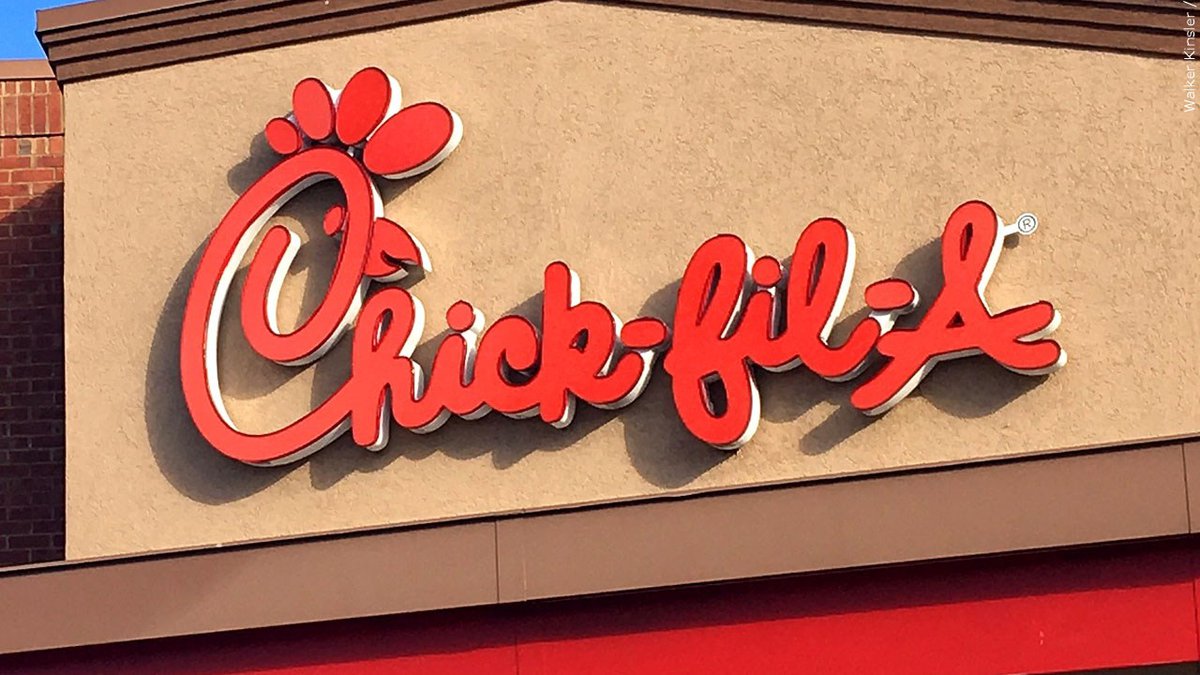Chick-fil-A, a renowned fast-food restaurant chain, has carved a distinct identity for itself in the highly competitive fast-food industry. Founded in 1967 by Truett Cathy, Chick-fil-A has grown into a beloved brand known for its commitment to exceptional quality, customer service, and strong values. With a focus on chicken-based menu offerings, Chick-fil-A has successfully differentiated itself from other fast-food chains and has become a favorite among customers of all ages.
Chick-fil-A has built its reputation on serving high-quality food made from fresh ingredients. The brand takes pride in its chicken, which is sourced from reputable suppliers and prepared using a unique cooking technique that ensures a tender and flavorful experience. Chick-fil-A’s menu features a variety of chicken-based items, including their signature Chick-fil-A Sandwich, nuggets, wraps, and salads, all made with a meticulous attention to detail and taste.
One of the hallmarks of the Chick-fil-A experience is its commitment to exceptional customer service. The brand places a strong emphasis on hiring and training friendly and attentive team members, known as “Chick-fil-A Operators,” who go above and beyond to create a welcoming and positive dining experience. The staff’s courteousness, efficiency, and commitment to satisfying customers’ needs have become synonymous with the Chick-fil-A brand.
Chick-fil-A’s success is also deeply rooted in its strong values and corporate culture. The company is known for its commitment to operating on Christian principles, which includes closing its stores on Sundays to allow employees to spend time with family and to honor their religious beliefs. This emphasis on core values resonates with customers and contributes to the brand’s positive image.
Chick-fil-A actively engages in community involvement and philanthropic efforts. The company supports various charitable organizations and initiatives, focusing on areas such as education, youth development, and fighting hunger. Chick-fil-A’s commitment to giving back to the communities it serves further strengthens its brand image and fosters a sense of goodwill among customers.
Despite having fewer locations compared to some of its competitors, Chick-fil-A has consistently achieved impressive growth and customer loyalty. The brand’s expansion strategy focuses on maintaining a strong presence in local markets, ensuring that each location upholds the brand’s commitment to quality and service. This approach, coupled with a loyal customer base, has led to sustained success and high customer satisfaction.
Chick-fil-A’s success can be attributed to its unwavering commitment to exceptional quality, outstanding customer service, strong values, community involvement, and a distinctive menu. Through these key pillars, Chick-fil-A has cultivated a loyal customer following and built a brand that stands apart in the competitive fast-food landscape. With its focus on providing a memorable dining experience rooted in integrity and excellence, Chick-fil-A continues to grow and delight customers across the United States.
History of Chic-fil-A
Chick-fil-A was founded by Truett Cathy in 1946, when he opened the Dwarf Grill, a diner in Hapeville, Georgia. In 1967, Cathy opened the first Chick-fil-A restaurant in Atlanta’s Greenbriar Shopping Center. The restaurant was an immediate success, and Chick-fil-A began to expand rapidly.

The company’s signature dish is the Chick-fil-A Chicken Sandwich, which is made with a boneless, skinless chicken breast that is hand-breaded and pressure-cooked. The sandwich is served on a toasted bun with two pickles and is one of the most popular fast food items in the United States.
In addition to the Chick-fil-A Chicken Sandwich, the company also offers a variety of other menu items, including waffle fries, salads, milkshakes, and desserts. Chick-fil-A is also known for its customer service, which is consistently ranked among the best in the fast food industry.
Today, Chick-fil-A is the largest quick-service chicken restaurant chain in the United States. There are over 2,500 Chick-fil-A restaurants in 47 states and Washington, D.C. The company is privately held and is owned by the Cathy family.
Chick-fil-A has been praised for its commitment to customer service and its charitable giving. The company has donated millions of dollars to a variety of charities, including the Chick-fil-A Foundation, which supports education and hunger relief programs.
However, Chick-fil-A has also been criticized for its stance on same-sex marriage. In 2012, the company’s CEO, Dan Cathy, made public statements opposing same-sex marriage. This led to a boycott of Chick-fil-A by some customers.
Despite the boycott, Chick-fil-A has continued to grow and expand. The company opened its first international restaurant in 2015, and it plans to open more restaurants in the future.
Chick-fil-A is a popular fast food chain that is known for its delicious chicken sandwiches, its friendly customer service, and its charitable giving. The company has faced some criticism for its stance on same-sex marriage, but it remains a popular choice for many customers.
Marketing Strategies of Chick-fil-A
Chick-fil-A has built a strong brand and a loyal customer base through its effective marketing strategies. By focusing on key elements such as customer experience, brand consistency, community involvement, and digital innovation, Chick-fil-A has successfully differentiated itself from competitors and established a strong presence in the fast-food industry. Let’s delve into the details of Chick-fil-A’s marketing strategies, highlighting their key components and their impact on the brand’s success.
Customer Experience: One of the cornerstones of Chick-fil-A’s marketing strategy is its emphasis on providing an exceptional customer experience. The company is known for its friendly and attentive staff, clean and welcoming restaurants, and efficient service. Chick-fil-A places a strong emphasis on training its employees to deliver outstanding customer service, resulting in positive interactions that leave a lasting impression on customers.
Brand Consistency: Chick-fil-A is renowned for its consistent brand messaging and image across all touchpoints. From advertising campaigns to restaurant design, the brand ensures a cohesive and recognizable experience for customers. This consistency extends to the menu, with Chick-fil-A focusing on offering high-quality, freshly prepared chicken-based menu items that customers can trust.
Community Involvement: Chick-fil-A has made community involvement an integral part of its marketing strategy. The company actively participates in local events, sponsors charitable initiatives, and supports youth development programs. By engaging with the community and giving back, Chick-fil-A strengthens its brand’s connection with its customers and fosters goodwill.
Digital Innovation: Chick-fil-A has embraced digital innovation to enhance the customer experience and drive engagement. The brand has developed a robust mobile app that allows customers to conveniently place orders, customize their meals, and earn rewards. The app also provides personalized recommendations and exclusive offers, keeping customers engaged and encouraging repeat visits.
Targeted Advertising: Chick-fil-A’s advertising campaigns are strategically crafted to resonate with its target audience. The brand often highlights its commitment to quality, customer service, and community involvement in its advertisements. Additionally, Chick-fil-A leverages various channels, including television, social media, and outdoor advertising, to reach a wide range of customers and reinforce its brand messaging.
Product Innovation: Chick-fil-A continually innovates its menu to meet changing customer preferences and market trends. The introduction of new menu items, such as breakfast options, salads, and spicy chicken variants, keeps customers engaged and encourages them to explore different offerings. This focus on product innovation allows Chick-fil-A to stay relevant and attract new customers.
Chick-fil-A’s marketing strategies have played a pivotal role in its success as a leading fast-food brand. By prioritizing the customer experience, maintaining brand consistency, actively engaging with the community, embracing digital innovation, and pursuing product innovation, Chick-fil-A has built a strong and loyal customer base. Through these strategic efforts, Chick-fil-A continues to stand out in a competitive market, delivering exceptional food and service that keeps customers coming back for more.
Marketing Mix of Chick-fil-A
Chick-fil-A has achieved remarkable success in the fast-food industry, and a key factor in its triumph lies in its effective marketing mix. The marketing mix refers to the combination of elements that a company utilizes to promote its products or services. In the case of Chick-fil-A, a careful balance of product, price, place, and promotion has been instrumental in its growth and differentiation. In this article, we will delve into the details of Chick-fil-A’s marketing mix, highlighting how each element contributes to the brand’s success.
Product: The product element of Chick-fil-A’s marketing mix focuses on its food offerings. The brand is widely recognized for its chicken-based menu items, including its iconic Chick-fil-A Sandwich, chicken nuggets, wraps, and salads. Chick-fil-A places a strong emphasis on the quality of its products, ensuring that they are made from fresh ingredients and prepared with care. The brand also caters to various dietary preferences by offering grilled chicken options and vegetarian choices.
Price: Chick-fil-A’s pricing strategy strikes a balance between affordability and the perception of value. While it positions itself as a higher-end fast-food option, the brand ensures that its prices remain competitive within the industry. Customers are willing to pay a slightly higher price for Chick-fil-A’s quality food and exceptional service, as they perceive it to be worth the value.
Place: The place element of Chick-fil-A’s marketing mix refers to the locations where customers can access its products. The brand strategically chooses its restaurant locations, often targeting high-traffic areas such as shopping centers, college campuses, and busy intersections. This allows Chick-fil-A to maximize its visibility and convenience for customers, making its products easily accessible.
Promotion: Promotion encompasses the various marketing activities employed by Chick-fil-A to communicate and promote its brand and offerings. The brand employs a mix of traditional and digital marketing channels, including television commercials, print advertisements, outdoor billboards, social media campaigns, and influencer partnerships. Chick-fil-A often utilizes creative and engaging advertising tactics to resonate with its target audience and drive brand awareness.
Additionally, Chick-fil-A leverages promotional campaigns tied to specific events or holidays, such as its popular Cow Appreciation Day, where customers dress up as cows to receive free food. The brand also emphasizes word-of-mouth marketing by encouraging customers to share their positive experiences and recommendations with friends and family.
Chick-fil-A’s marketing mix is carefully crafted to deliver a unique and satisfying customer experience. Through its high-quality products, competitive pricing, strategic restaurant locations, and innovative promotional campaigns, Chick-fil-A has established a strong brand presence and loyal customer base. By consistently focusing on these elements, Chick-fil-A continues to differentiate itself in the fast-food industry, offering a compelling combination of exceptional food, service, and value that keeps customers coming back for more.
STP Analysis of Chick-fil-A
STP analysis is a marketing framework that stands for Segmentation, Targeting, and Positioning. It helps businesses like Chick-fil-A identify and understand their target market, develop effective marketing strategies, and position their brand in a competitive landscape. In this article, we will explore the STP analysis of Chick-fil-A in detail, focusing on how the company segments its market, selects target segments, and positions itself to cater to its customers’ needs.
Segmentation:
Chick-fil-A recognizes that not all customers have the same preferences and needs. To effectively serve its diverse customer base, the brand employs several segmentation variables to divide the market into distinct groups. These variables may include demographic factors (such as age, income, and gender), psychographic traits (such as lifestyle and values), and behavioral factors (such as usage frequency and customer loyalty).
For example, Chick-fil-A targets families by offering kid-friendly menu options and providing play areas in some of its restaurants. The brand also caters to health-conscious individuals by offering grilled chicken and salad options. Additionally, Chick-fil-A taps into the college student market by opening locations near campuses and offering late-night dining options.
Targeting:
Once the market is segmented, Chick-fil-A selects specific segments to focus its marketing efforts on. The brand carefully evaluates the attractiveness and viability of each segment based on factors such as size, growth potential, competition, and alignment with its brand positioning. By targeting specific segments, Chick-fil-A can tailor its offerings and marketing messages to better resonate with the needs and preferences of those customers.
For instance, Chick-fil-A targets families by creating a family-friendly atmosphere in its restaurants, offering menu options for children, and providing activities and promotions that appeal to parents. The brand also targets busy professionals by emphasizing quick and convenient service, mobile ordering options, and drive-thru facilities.
Positioning:
Positioning refers to the way a brand is perceived in the minds of its target customers relative to its competitors. Chick-fil-A has successfully positioned itself as a provider of high-quality, fresh, and delicious chicken-based fast food. The brand emphasizes its commitment to exceptional customer service, clean and inviting restaurants, and a menu that appeals to a variety of tastes and preferences.
Chick-fil-A also positions itself as a company with strong values and a focus on community involvement. Its commitment to closing on Sundays to allow employees to spend time with family and honor their religious beliefs resonates with customers who appreciate the brand’s dedication to its principles.
Chick-fil-A’s STP analysis has been instrumental in its success as a leading fast-food brand. By effectively segmenting the market, targeting specific customer groups, and positioning itself as a provider of high-quality chicken-based meals with exceptional service and strong values, Chick-fil-A has built a strong brand and a loyal customer base. Through precise market understanding and strategic decision-making, Chick-fil-A continues to thrive in a competitive industry and deliver a unique dining experience that resonates with its target customers.
Also Read: Marketing Strategies and Marketing Mix of Taco Bell
To read more content like this, subscribe to our newsletter



